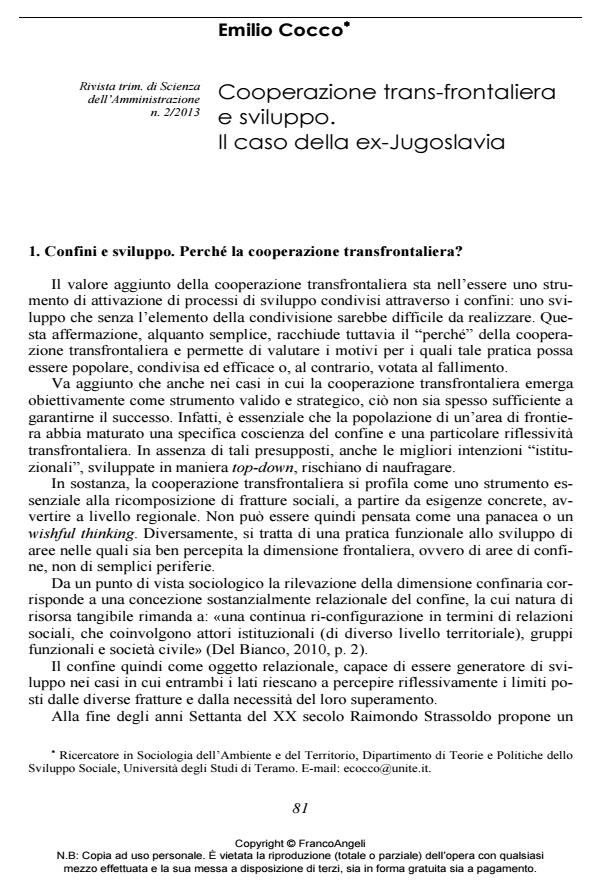Cooperazione trans-frontaliera e sviluppo. Il caso della ex-Jugoslavia
Titolo Rivista RIVISTA TRIMESTRALE DI SCIENZA DELL’AMMINISTRAZIONE
Autori/Curatori Emilio Cocco
Anno di pubblicazione 2013 Fascicolo 2013/2
Lingua Italiano Numero pagine 20 P. 81-100 Dimensione file 478 KB
DOI 10.3280/SA2013-002006
Il DOI è il codice a barre della proprietà intellettuale: per saperne di più
clicca qui
Qui sotto puoi vedere in anteprima la prima pagina di questo articolo.
Se questo articolo ti interessa, lo puoi acquistare (e scaricare in formato pdf) seguendo le facili indicazioni per acquistare il download credit. Acquista Download Credits per scaricare questo Articolo in formato PDF

FrancoAngeli è membro della Publishers International Linking Association, Inc (PILA)associazione indipendente e non profit per facilitare (attraverso i servizi tecnologici implementati da CrossRef.org) l’accesso degli studiosi ai contenuti digitali nelle pubblicazioni professionali e scientifiche
La cooperazione transfrontaliera è una delle strategie di promozione dello sviluppo più evocate ed apprezzate nel contesto dell’integrazione europea. In particolare, la cooperazione transfrontaliera ambisce a coniugare la crescita integrata di territori attraversati da confini nazionali con la capacità di ricomporre le fratture sociali presenti negli stessi territori. Tuttavia, tale strategia funziona solo nel caso in cui le aree coinvolte siano capaci di rappresentarsi come territori di confine, ovvero di riflettere la complementarietà dei processi di sviluppo come patrimonio relazionale delle popolazioni residenti al di qua e al di là del confine. Il capitolo discute tali problemi in riferimento al caso dei Balcani, segnatamente della ex-Jugoslavia. Il ruolo del nazionalismo, la specificità delle società di frontiera, la formazione dello stato e l’uso politico della violenza sono alcuni dei fattori principali della formazione di un’area di confine. Gli stessi fattori compongono la costellazione di riferimento per cogliere i significati e le ambizioni della cooperazione transfrontaliera, nonché le ragioni del suo successo o delle sue difficoltà.
Parole chiave:Sviluppo, Confini, ex-Jugoslavia
Emilio Cocco, Cooperazione trans-frontaliera e sviluppo. Il caso della ex-Jugoslavia in "RIVISTA TRIMESTRALE DI SCIENZA DELL’AMMINISTRAZIONE" 2/2013, pp 81-100, DOI: 10.3280/SA2013-002006